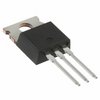-
The maximum safe operating area (SOA) of the STP12NM50FD is not explicitly stated in the datasheet, but it can be estimated based on the device's thermal characteristics and voltage ratings. As a general rule, it's recommended to operate the device within the specified voltage and current ratings to ensure safe operation.
-
To ensure proper cooling, consider the device's thermal resistance (RthJA) and maximum junction temperature (Tj). Use a heat sink or thermal pad with a low thermal resistance to dissipate heat. Also, ensure good airflow around the device and avoid blocking the heat sink fins. You can also use thermal simulation tools to optimize your design.
-
To minimize EMI and noise, follow good PCB layout practices such as: keep the device's power and ground pins as close as possible, use a solid ground plane, and keep sensitive analog signals away from the device's switching nodes. Also, consider using a shielded inductor and a common-mode choke to reduce EMI.
-
The STP12NM50FD is an industrial-grade device, but it may not meet the specific requirements of high-reliability or automotive applications. Check the device's AEC-Q100 qualification and PPAP (Production Part Approval Process) documentation to ensure it meets the required standards. You may need to consider a different device or consult with STMicroelectronics for customized solutions.
-
To troubleshoot issues, start by checking the device's pinout and connections. Verify that the input voltage, current, and frequency are within the specified ranges. Use an oscilloscope to monitor the device's output voltage and current waveforms. Check for overheating, and ensure the device is properly cooled. Consult the datasheet and application notes for troubleshooting guidelines and seek support from STMicroelectronics or a qualified engineer if needed.
 STP12NM50FD datasheet
by STMicroelectronics
STP12NM50FD datasheet
by STMicroelectronics
 STP12NM50FD datasheet
by STMicroelectronics
STP12NM50FD datasheet
by STMicroelectronics